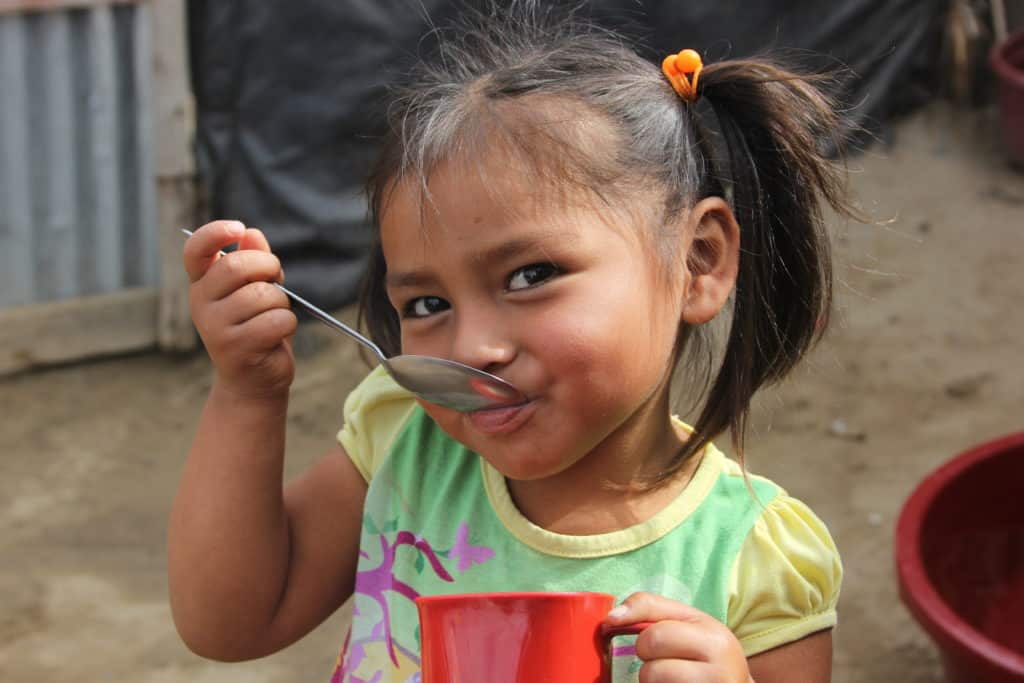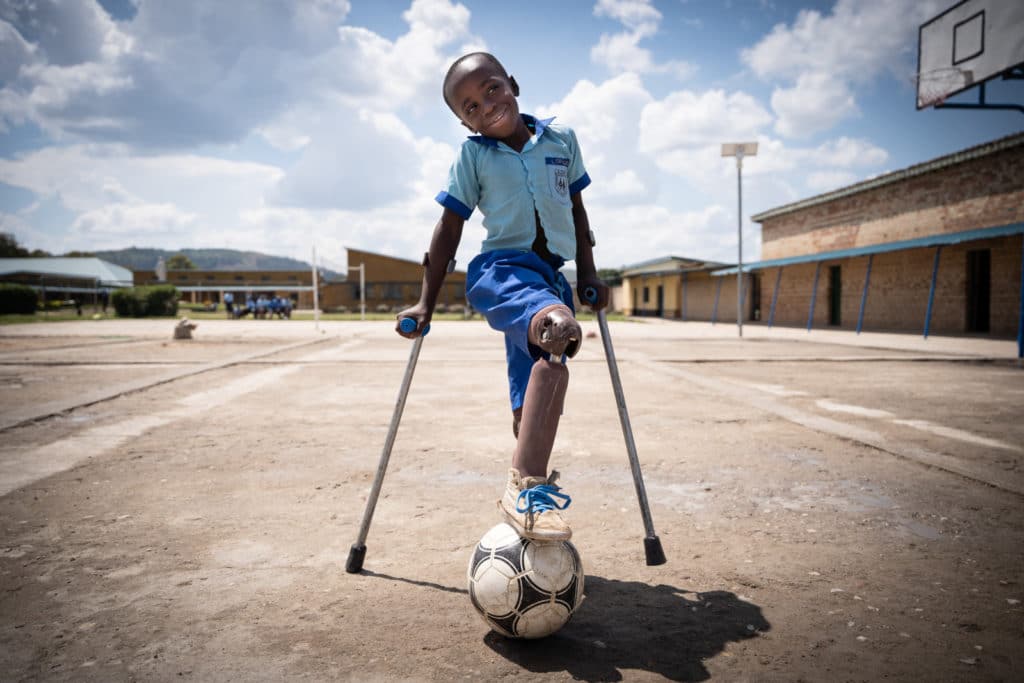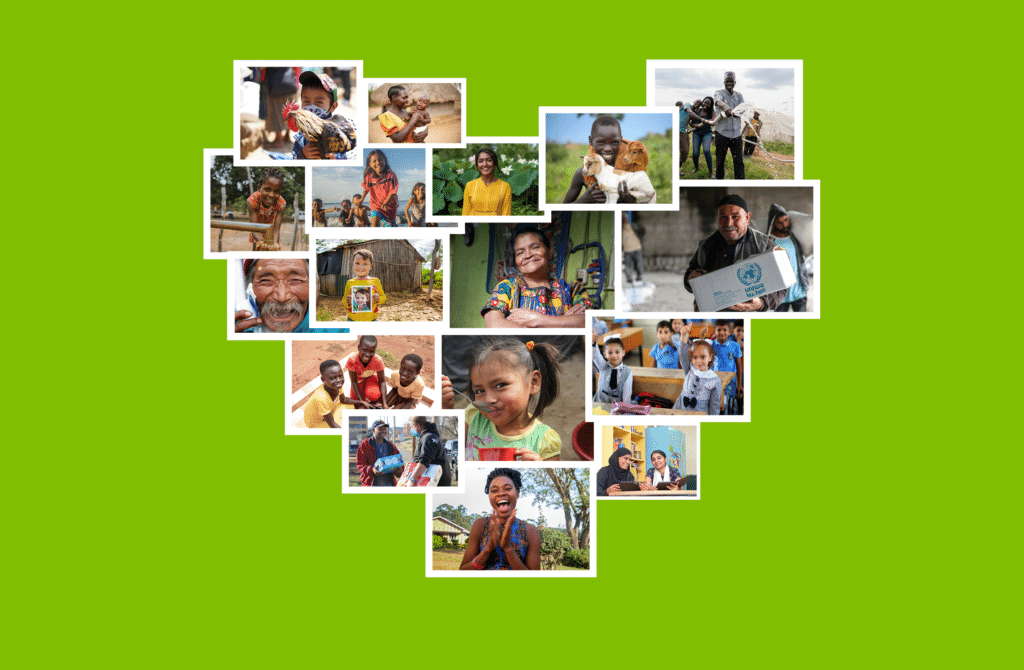About a year into my first “real” job after college, I accidentally got my company sued.
One day the CEO called me into his office and asked if I could find a certain stock image on our website and explain how it got there. A few hours later, after doing some searching, I came back to his office to tell him that I had put the image on our website after finding it in a folder titled “stock images.” Not knowing a lot about stock images at the time, I had no idea that the image had been purchased for one-time use, and our company was now being sued for using it outside the bounds of our agreement. Thankfully the company was able to pay a fee to settle the issue and the case closed. (And even more thankfully for me, I didn’t have to pay that fee out of my paycheck as I naively assumed when the whole deal went down!)
Since that time, I have worked 15 years in fundraising for nonprofits. Thousands and thousands of photos later – authentic and stock – I have learned a few things since that first stock photo incident early in my career.
In my current role, I have the privilege to 1) market to potential workplace giving donors representing nearly 100 top international nonprofits in the public and private sector and 2) represent the Combined Federal Campaign (CFC) and its thousands of participating charities to potential federal donors. I have worked with charity photos, stock photos and authentic photos from our own professional photo shoots and seen the importance of selecting photos that inspire and motivate greater giving, while appropriately and ethically representing the individuals and causes shown.
The balance of ethical and impactful can be a challenge, but it’s worth the effort it takes to view photos through various lenses and make the right choice. Here are a few of the lessons I’ve learned along the way.
1. Make sure you have permission to use the photo.
This one should be obvious, but sometimes we make assumptions when we move too fast. If it’s a stock image you’re using, make sure you (and others with access to the photo) understand the terms of usage. There are sophisticated trackers for stock photography that will catch you if you are outside of your agreement. If you are doing a photo shoot, make sure you have written approval from the subject for use of the photography, including details on where and when the photos can be used. In marketing (and in life) it’s helpful to be respectful and grateful when individuals help your effort – we try to go out of our way to share photos taken in a photo shoot with the individuals that offered up their time and their face for our cause. It’s another level of approval that helps set expectations for your subjects and prevent future challenges down the road.
2. Show people in a dignified, authentic way.
We go to painstaking lengths to create and share photos that paint ourselves and our family members in a good light – from using filters, staging scenes, taking multiple images to choose the best one, etc. However, when you’re not trying to examine yourself in a photo and you’re choosing photography to inspire a heartfelt reaction for giving, especially in global philanthropy, we can be hasty pushing too hard to show the need at the expense of the dignity of the individuals shown. While there is marketing data that shows photographing a need in a dramatic way can increase funds, is it worth the dehumanization that’s done in the long term? We don’t think so. The nonprofits we work with are experts in this area and have nuanced, thoughtful approaches to their photography practices. I especially like what Laura Summerton from our partner Water Aid shares here in an older blog: https://washmatters.wateraid.org/blog/wateraids-approach-to-ethical-image-use.
Since our team is often using photos submitted by nonprofit partners, we err on the side of caution and focus on results-based photography, trying to show need in other ways than photos of individuals if possible. It is certainly a balancing act, but when I view an image, I ask myself, “Would I be ok if that’s how I or a family member was presented?”
3. Give credit where credit is due.
Especially for our employee giving work, our Charity Alliance members commit time to sharing their marketing assets with us. In turn, we work hard to give both the charity and the photographer credit as it’s given to us (Note: Sometimes we don’t get the photographer’s information so we just share the charity name, as you’ll see below). Photo credit is also an area of stock photo agreements that should be carefully understood.
4. Lean toward smiles and eye contact.
We want donors to feel good and feel a connection and care for the person on the other side of the marketing material. We want them to feel empowered to help others achieve life circumstances to smile about and to build on the power of positivity. Connection and happiness can be communicated through eye contact and smiles, so look for both when you’re choosing images. Want to see the power of a smile? Check out this article: https://mymodernmet.com/so-i-asked-them-to-smile-jay-weinstein/.
Here are two charity photos from this last year that always bring a smile to my face. I dare you to not smile when you look at them:


5. Choose kids and animals.
We need to represent causes accurately and special care should be taken when photographing minors, however, people are naturally drawn to the “cuteness” factor. It’s no secret that photos of kids and animals accomplish that goal! The marketing team at Heifer International does an expert job at featuring their mission while leaning into the cuteness factor with animals and kids. Just check out this sweet picture they submitted a few years ago!

6. Be aware of diversity.
Our charities serve people of all ages and needs around the world. So, for us, this means featuring images of individuals from many different countries and backgrounds. In my work with the CFC, this means showing federal employee donors across age ranges, genders, cause areas, ethnicities, etc. While we don’t want this to be contrived, it is critical for us to be mindful of what we are representing through individual photos and the full mix across all campaign materials.
7. Tell a story.
Photos play many roles in marketing and fundraising materials. Sometimes they set the tone of the piece. The strongest ones tell a story within the singular image. They evoke an emotion or even a question. It’s hard to nail the perfect image, but when you do, it can be powerful. It leaves the viewer thinking about the stories behind the photo, learning and wanting more, and ultimately finding inspiration to take action.



8. Use caution with stock photography.
If you’ve received nothing else from this article, hopefully this tip sticks. We do still use stock photos in some of our marketing, but very sparingly and for specific reasons. We much prefer to use authentic, compelling images when possible. They are more genuine and can also help keep us out of legal licensing trouble.
9. Use quality photos.
I think this goes without saying, but if you don’t have a strong, quality photo, it might be best to not use one and increase your design elements in a marketing piece instead. A pixelated or blurry image can reflect poorly to a potential donor. Alternatively, a quality image, like this one from International Justice Mission, has significantly more power to draw in a donor.

10. Be eye-catching.
Sometimes “surprise” in marketing can be a strong tool, even in fundraising. This might be injecting a little humor into your copy or photos when it’s not expected (as long as it’s still appropriate). Sometimes it’s just a different camera angle that compels the viewer to look twice, like this photo from Feed My Starving Children that left a lasting impression on me when first submitted four years ago!

11. Keep your target market in mind.
Remember that basic principle in marketing? Know and market to your target audience -that’s important to remember when selecting photography too. Ultimately, when it comes to marketing and photography, we want to use photos in a strategic, appropriate way to drive behavior. And if beauty (emotion, drive, conviction) is in the eye of the beholder, then we need to evaluate our photos from that perspective.
So, who is your beholder? One way to do this well is to ask for a second (or third or fourth) opinion. Every year my colleague and I evaluate the many photos we receive from our charities and take note of our favorites. Each year there are a handful of photos we both choose, a handful I choose that she didn’t, and a handful she selects that didn’t catch my attention. We come from different vantage points, which is why it’s important to include others (especially your target audience if possible) in the photo selection decision. For example, I love this picture because it makes me think of my daughter and how she loves eating (and smashing) bananas.

But if my boss does not have kids and has loved soccer all their life, this picture might be more compelling.

Keep different perspectives in mind, ask for second (and third and fourth) opinions, vary up what you show, and make sure you select and design for your beholder.
Hopefully these tips will help enhance your marketing materials and result in greater giving (and keep you from getting your company sued).
BLOG IMAGE PHOTO CREDIT:




















